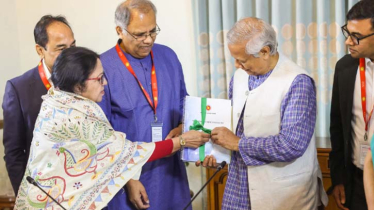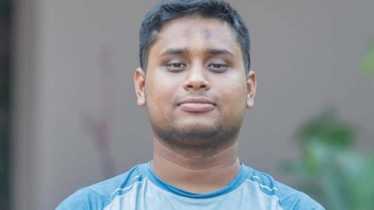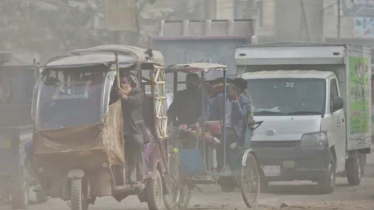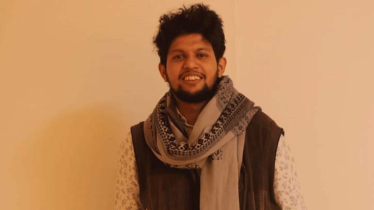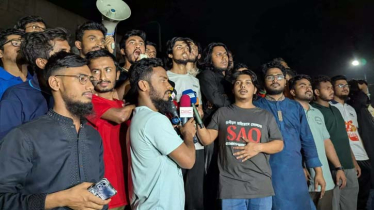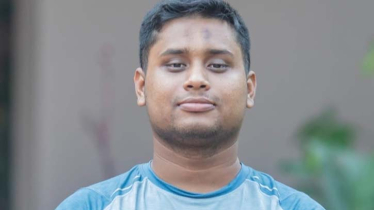
Photo : Messenger
The student movement under the anti-discrimination banner has completed a month of intense street protests. Over these 31 days, the country witnessed tragic incidents and the loss of many lives. In response to the students' demands, a quota reform was eventually implemented, with 93 percent of positions now allocated based on merit.
The movement caused significant disruptions across the country, leading to a state of paralysis. A curfew was imposed, and the situation escalated with police firing, tear gas, sound grenades, and clashes between law enforcement and enraged students. The unrest has resulted in a long list of casualties and widespread damage to state institutions.
The Ministry of Home Affairs has confirmed a death toll of 150 people in the ongoing student movement. The movement gained national and international attention following the killing of Abu Sayeed, a student from Begum Rokeya University, by police in Rangpur on July 16, protests spread across the country.
Over the course of 31 days, the situation in Bangladesh has been widely discussed and criticized around the world, with various statements and concerns raised by global leaders and human rights organizations. The government has been responding to these claims and criticisms, addressing incidents such as attacks on Bangladesh Television, Setu Bhavan, the head office of the Bangladesh Road Transport Authority (BRTA), toll plazas on the elevated expressway, the Footover Bridge in Mirpur, and various police boxes.
Here's a summary of the events in July:
July 1: Student gatherings and protests took place across various universities, including Dhaka University. The deadline for finalizing demands was set for July 4.
July 2: The Shahbagh area was besieged, and the Dhaka-Aricha highway was blocked in front of Jahangirnagar University.
July 3: Shahbagh Mor was blockaded, and protests and blockades were reported at seven to eight additional universities.
July 4: Protests continued, while the Appellate Division did not stay the High Court's verdict, which declared the cancellation of the Freedom Fighters quota circular invalid.
July 5: Protests and road blockades continued across the country.
July 6: Demonstrations and blockades were held at various universities.
July 7: The capital was paralyzed by the Bangla blockade. Universities and colleges announced the suspension of classes and examinations indefinitely.
July 8: Blockades were staged at 15 locations in Dhaka, protests occurred at 9 universities, railways were blockaded at 3 places, and 6 highways were obstructed.
July 9: A nationwide dawn to dusk 'Bangla Blockade' program was announced.
July 10: The Appellate Division directed all parties to maintain the status quo on the quota issue for four weeks and demanded reforms across all grades.
July 11: Blockades took place in various parts of the country despite police obstruction.
July 12: Protests were held on various university and college campuses.
July 13: A program was announced to present a memorandum to the President.
July 14: The memorandum was submitted to the President, and a 24-hour protest period was announced. Midnight protests on campuses featured slogans such as "Tumi Ke Ami Ke Razakar Razakar."
July 15: Protests at Dhaka University were met with attacks, and similar incidents occurred in different parts of the country.
July 16: Nationwide protests and clashes resulted in the deaths of 6 people. The closure of educational institutions was announced.
July 17: Mobile internet services were suspended overnight across the country. Dhaka University experienced turmoil around the funeral of those who died during the movement. Police used bullets, tear gas, and sound grenades against the students.
July 18: The anti-discrimination student movement's 'Complete Shutdown' program was observed across the country. The death toll rose to 27. The government proposed discussions, which were rejected by the agitators.
July 19: The second day of the 'Complete Shutdown' program saw 54 deaths nationwide due to firing, tear gas, sound grenades, attacks, clashes, vandalism, and arson. The Metrorail service was shut down indefinitely, a curfew was imposed nationwide from midnight, and a decision was made to deploy troops.
July 20: The curfew continued for a second day. Violence during the curfew resulted in 26 more deaths across the country.
July 21: The curfew was extended for another day. The Appellate Division's judgment overturned the High Court's verdict on the quota issue, setting merit recruitment in government jobs at 93%, freedom fighters at 5%, minorities at 1%, and disabled and third gender at 1%. Clashes across the country led to 8 additional deaths.
July 22: The movement was scattered, and Prime Minister Sheikh Hasina held discussions with businessmen.
July 23: The quota reform notification was published.
July 24: 57 Bangladeshis were jailed in the Emirates for protesting over the quota issue.
July 25: The UN human rights chief requested details about the suppression of the protests.
July 26: Nahid Islam, Asif Mahmud, and Abu Bakr Majumdar, three key coordinators of the quota movement, were taken to the Detective Branch (DB) office.
July 27: A wall writing and graffiti program was conducted across the country. The curfew was relaxed in 9 districts, including Dhaka.
July 28: Nationwide protests were held against the alleged genocide.
July 29: Students held a program with red cloth covering their faces, while the ruling party organized a mourning program on the same day.
July 30: Outraged civil society presented 11 demands, including an investigation under the supervision of the United Nations.
July 31: The March for Justice program took place, leading to clashes in various parts of the country.
Messenger/Fameema



